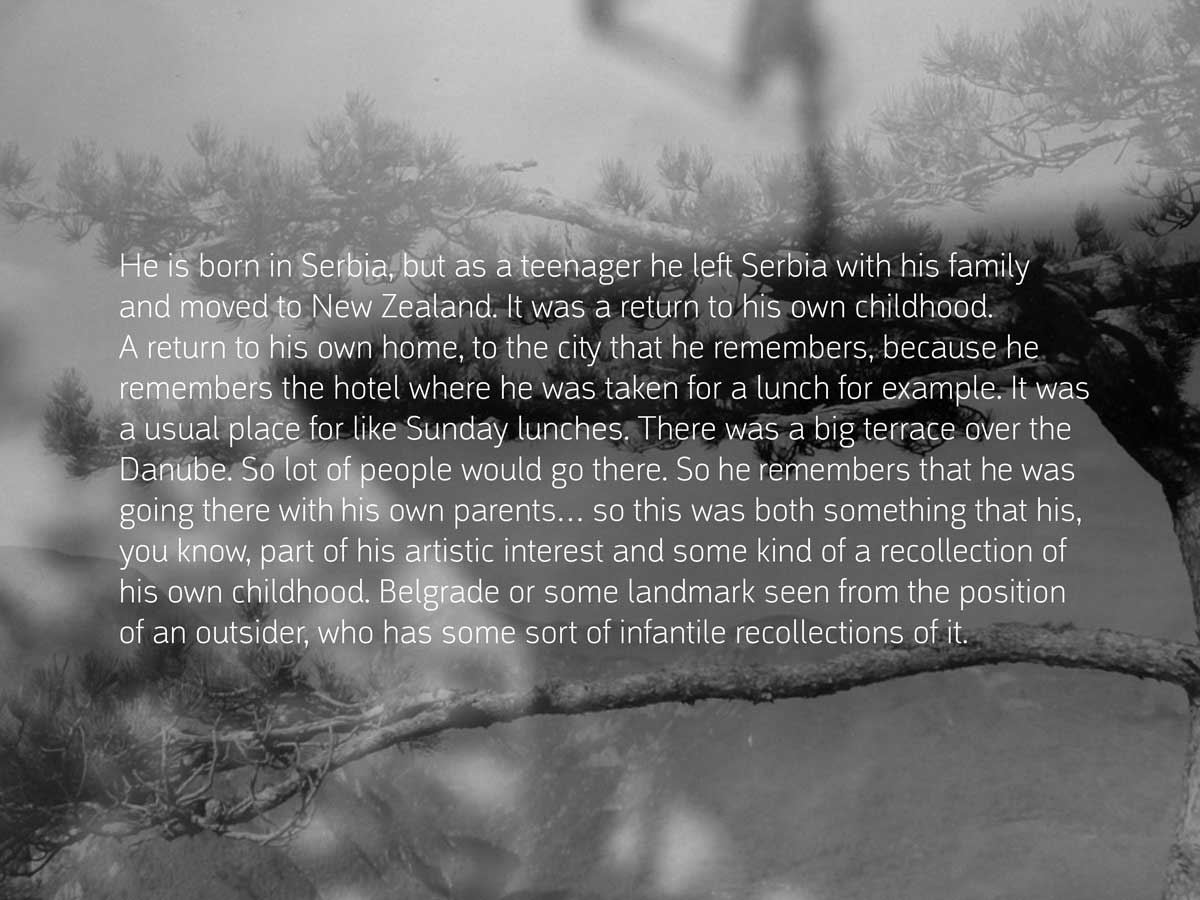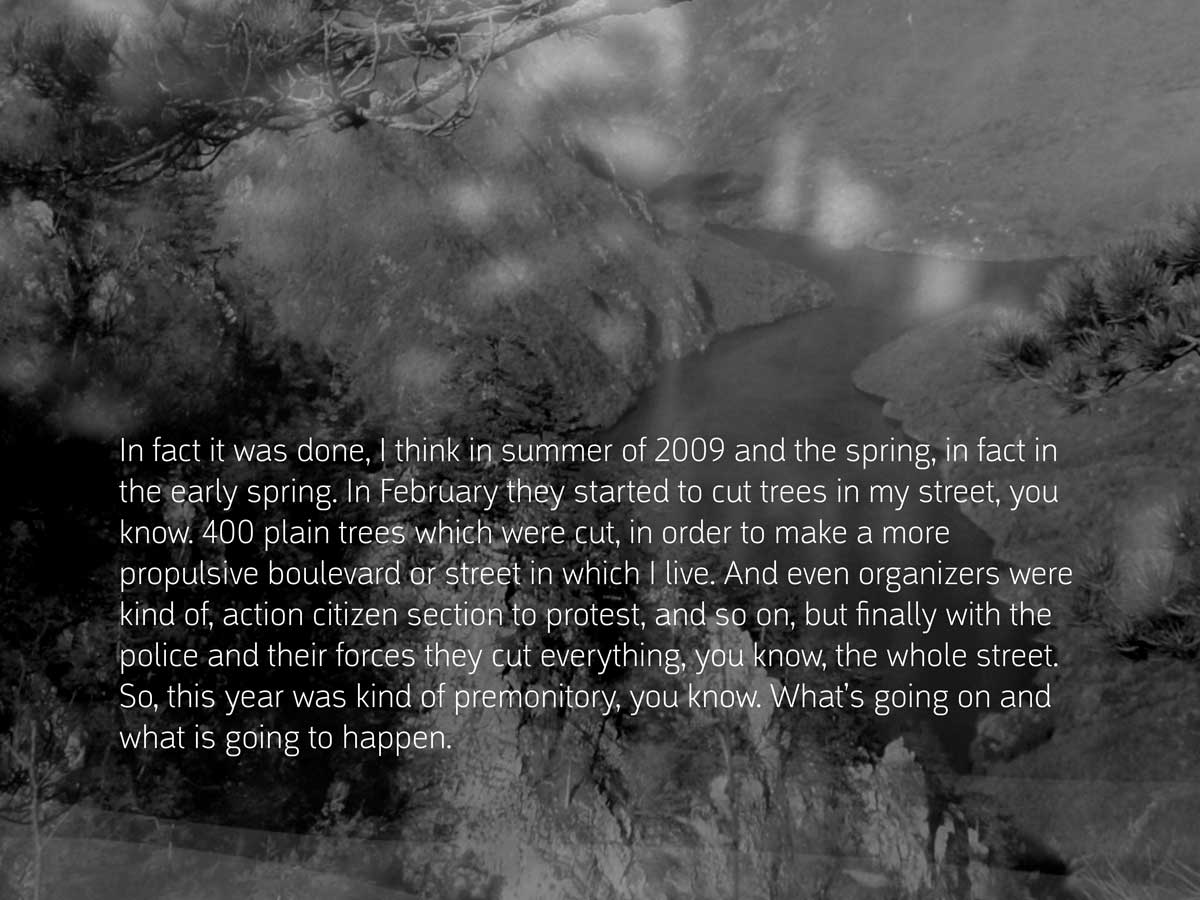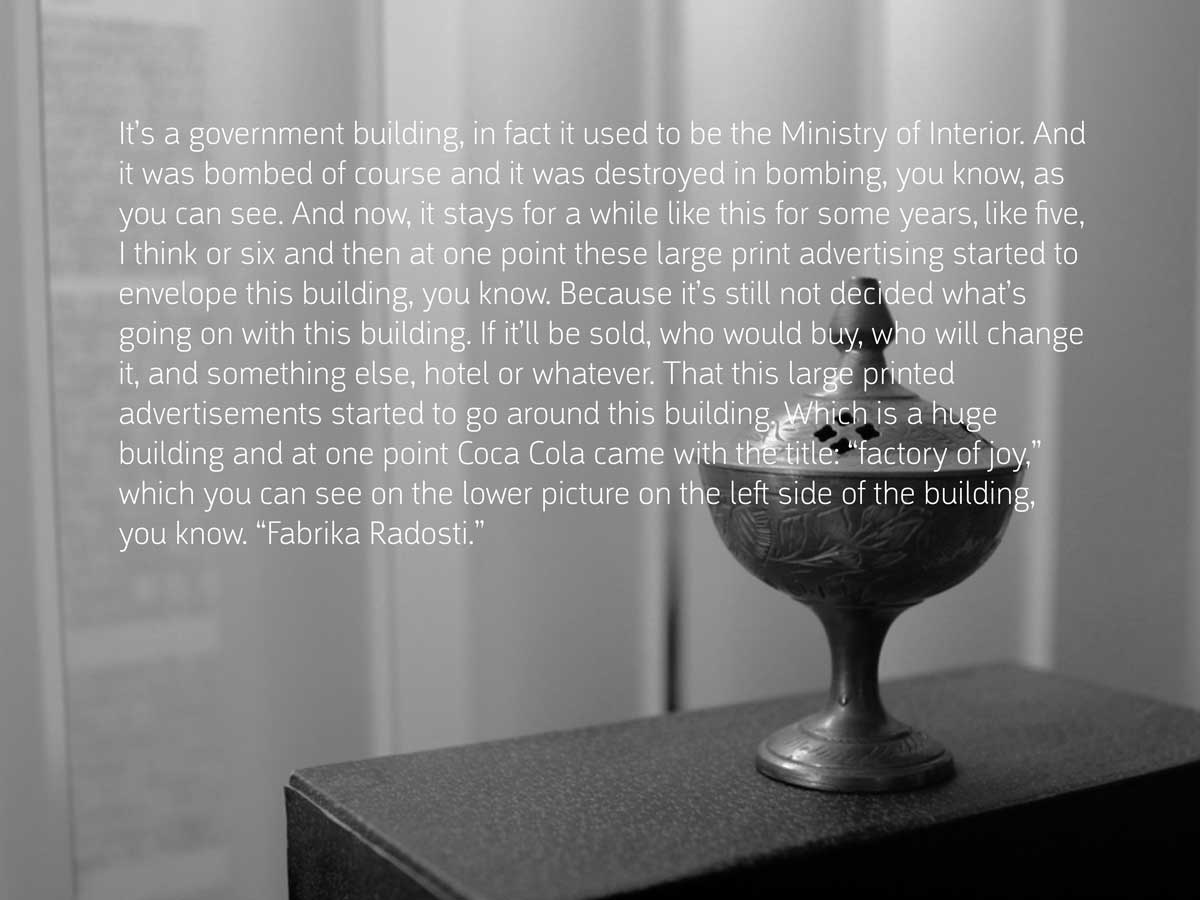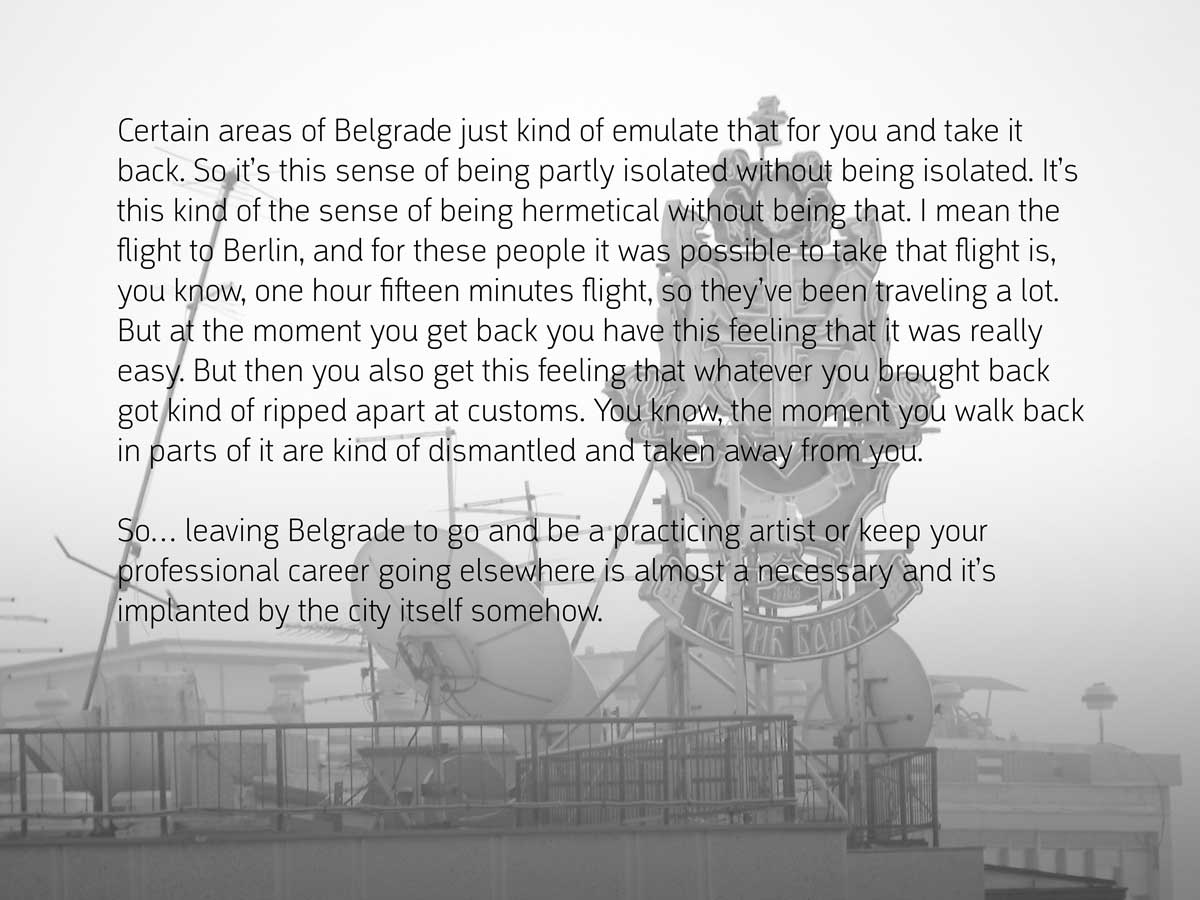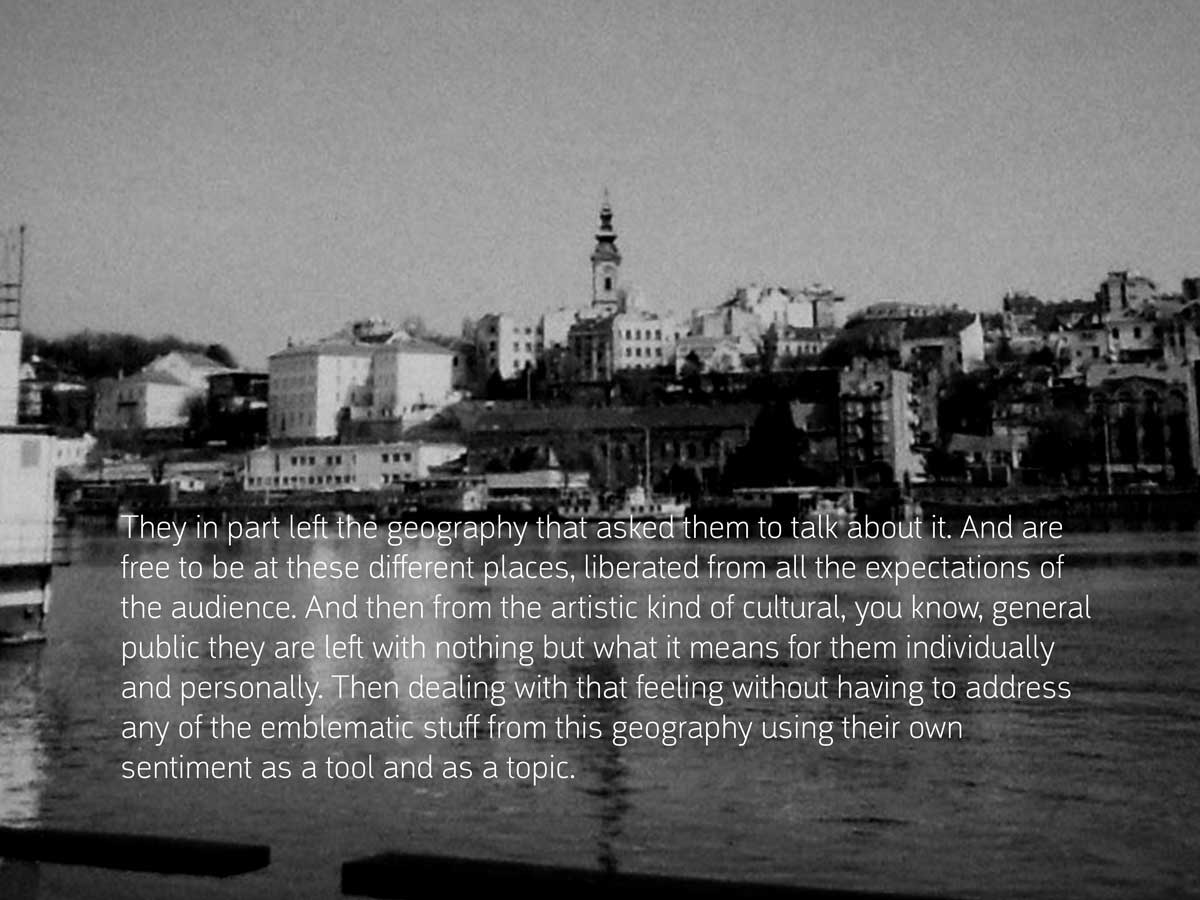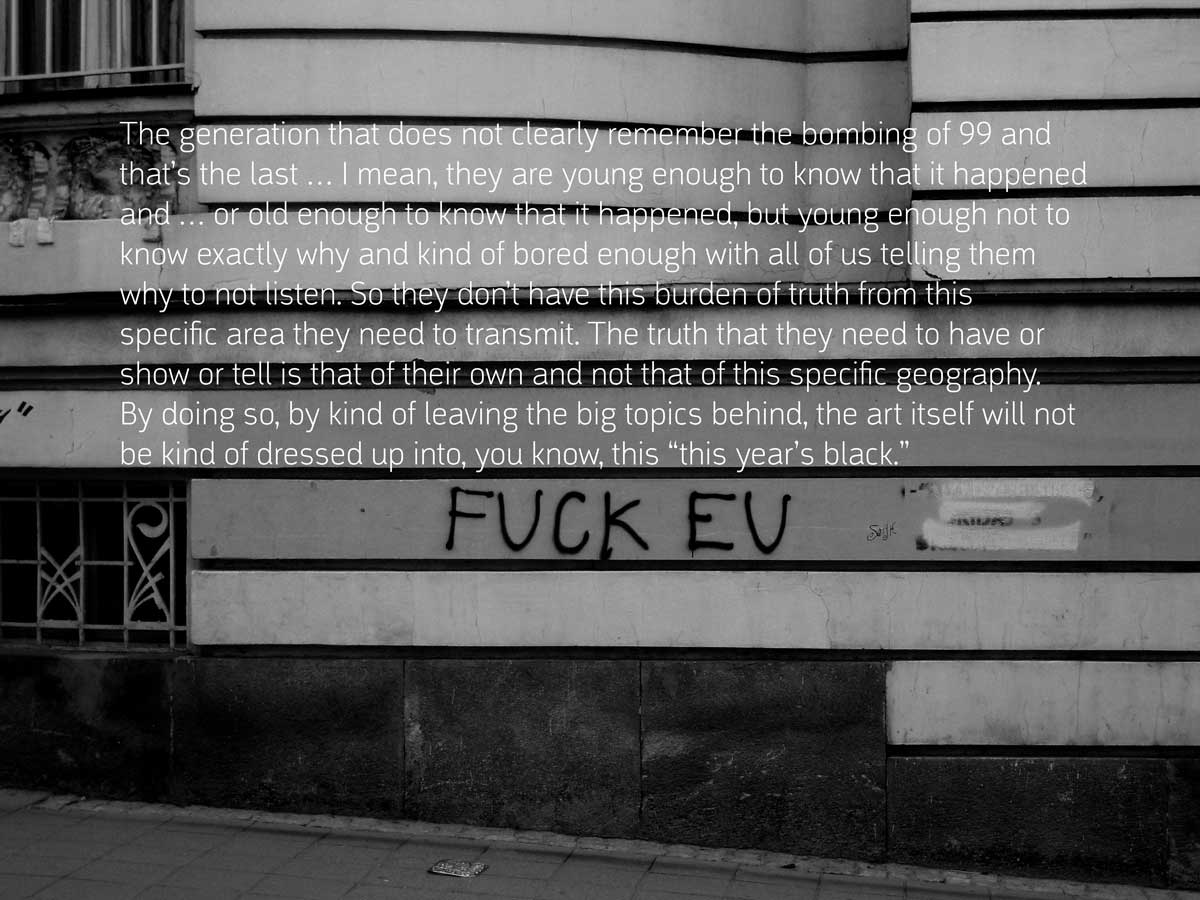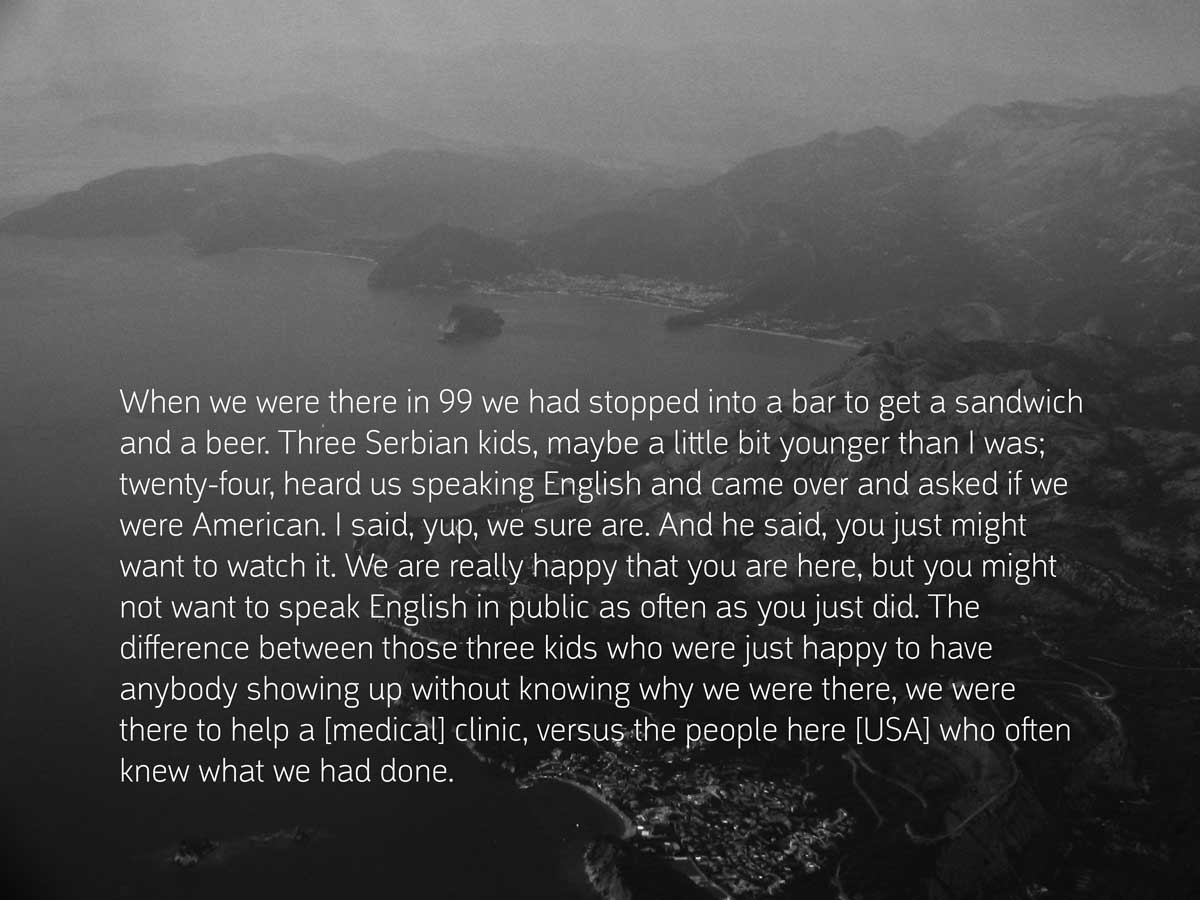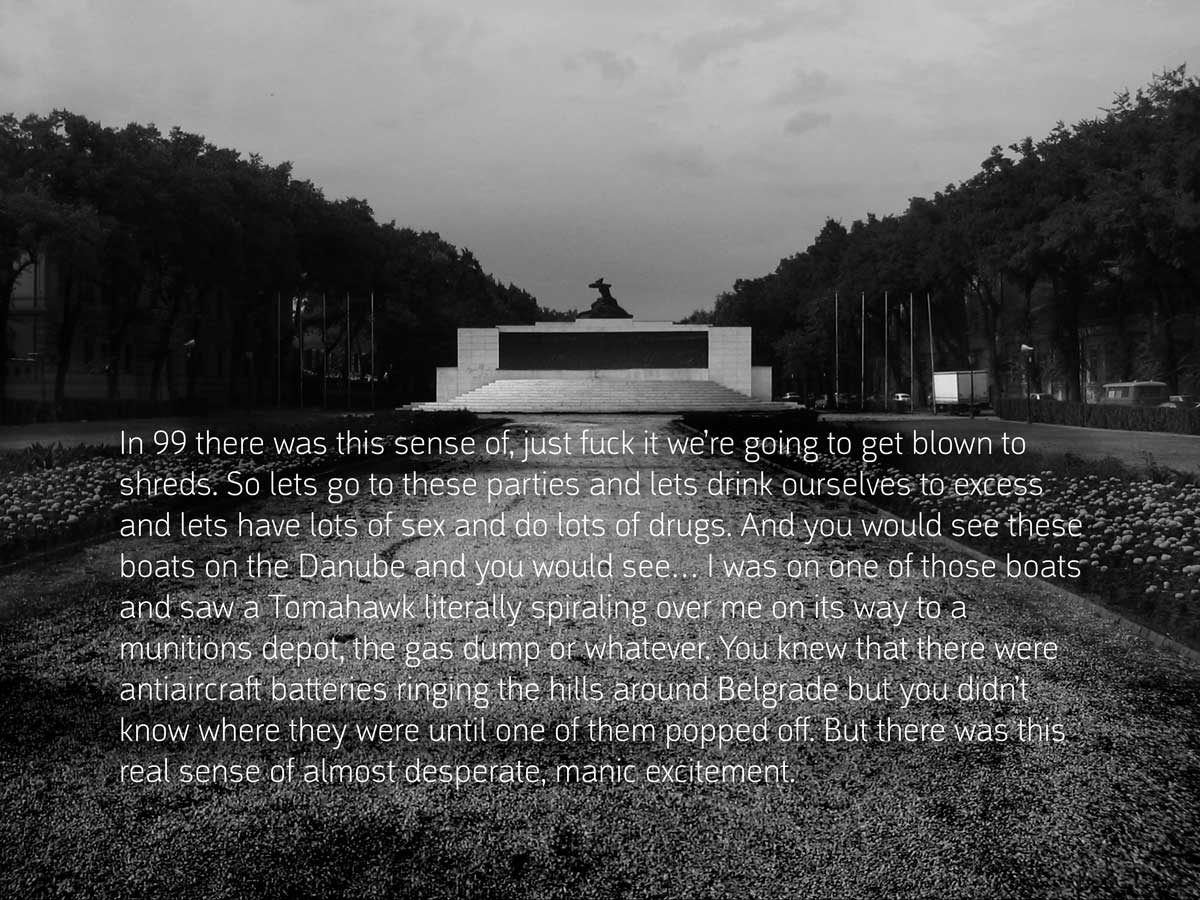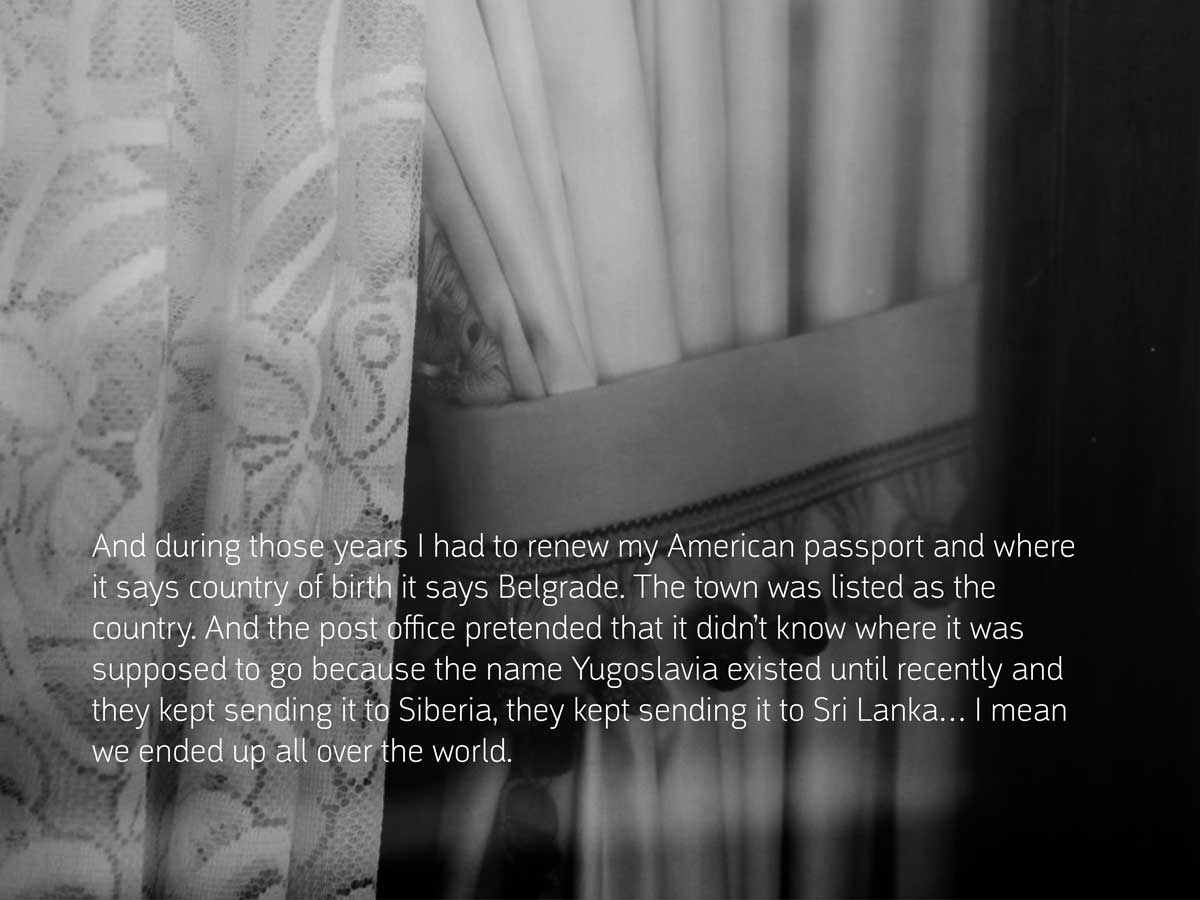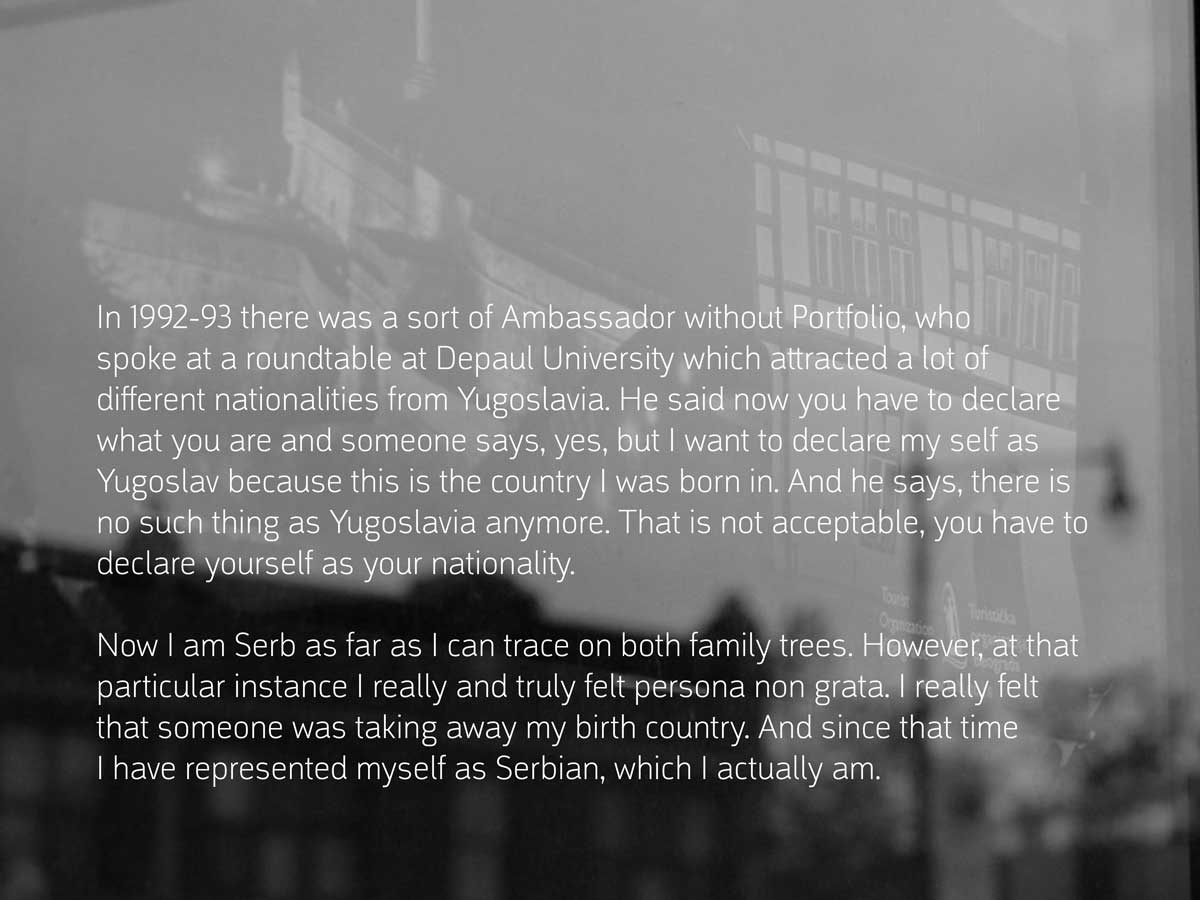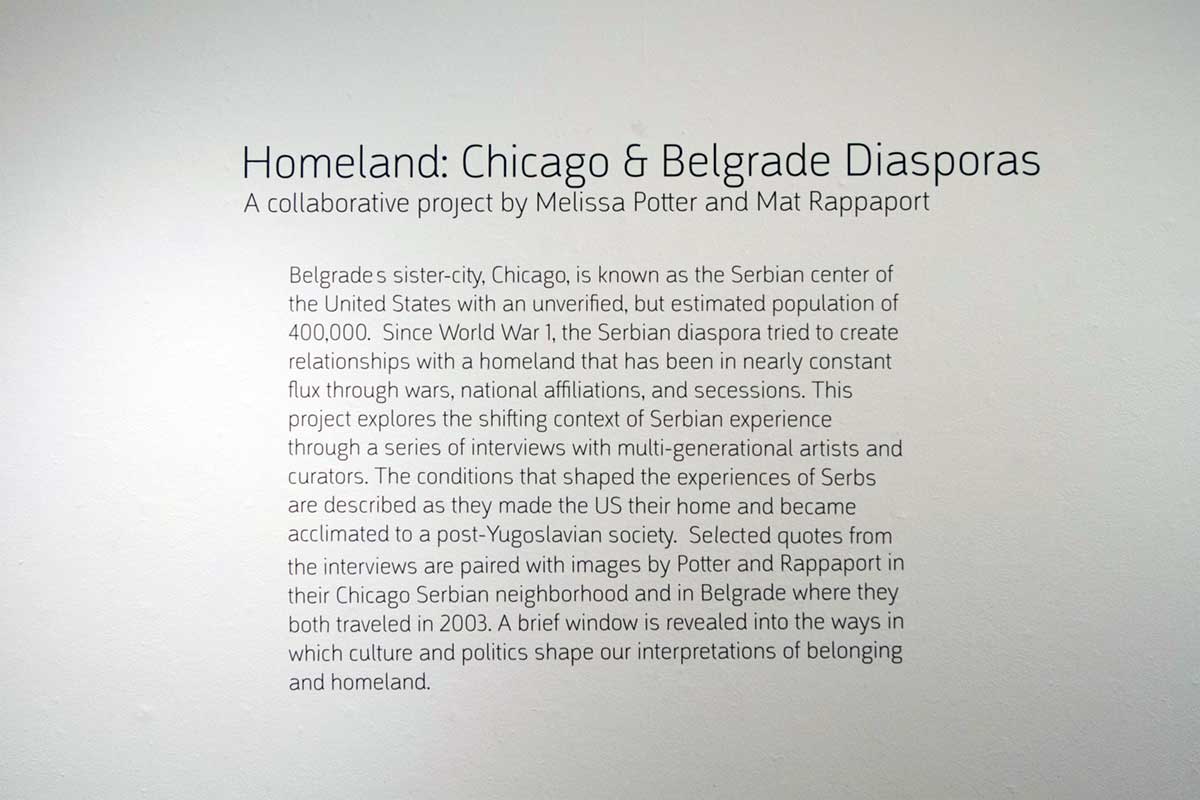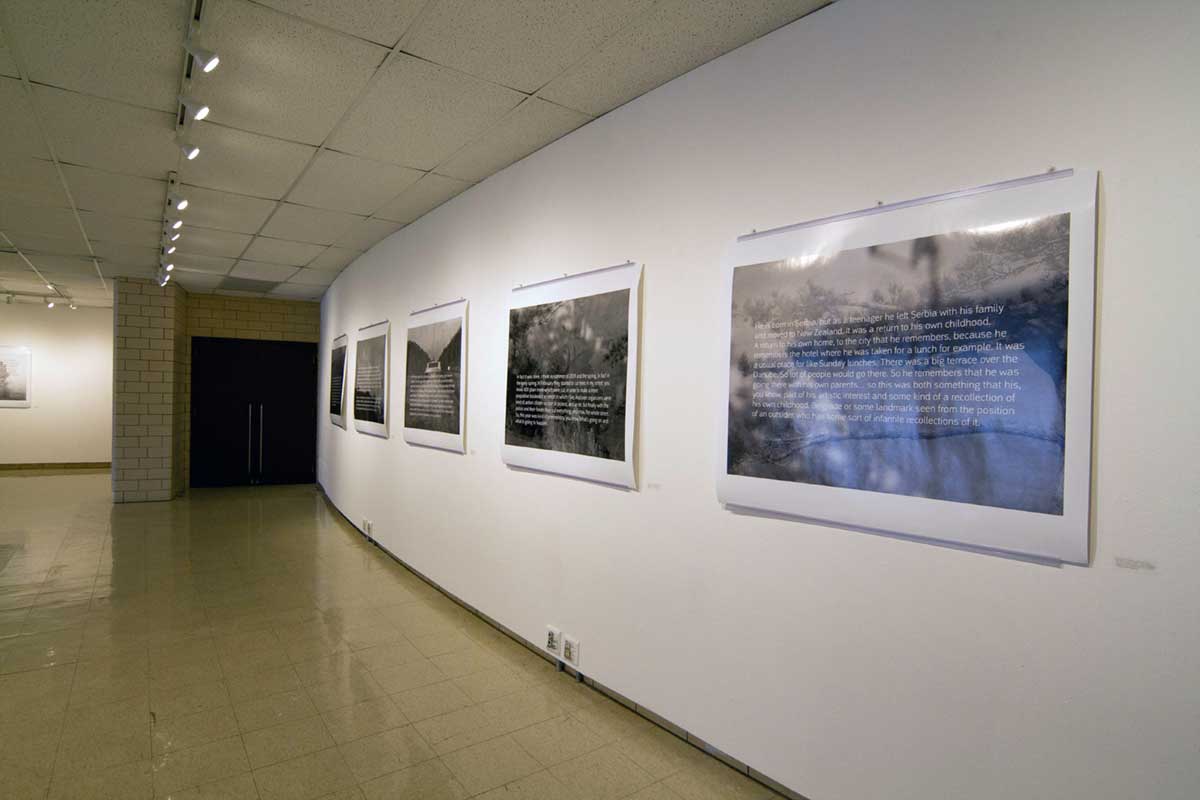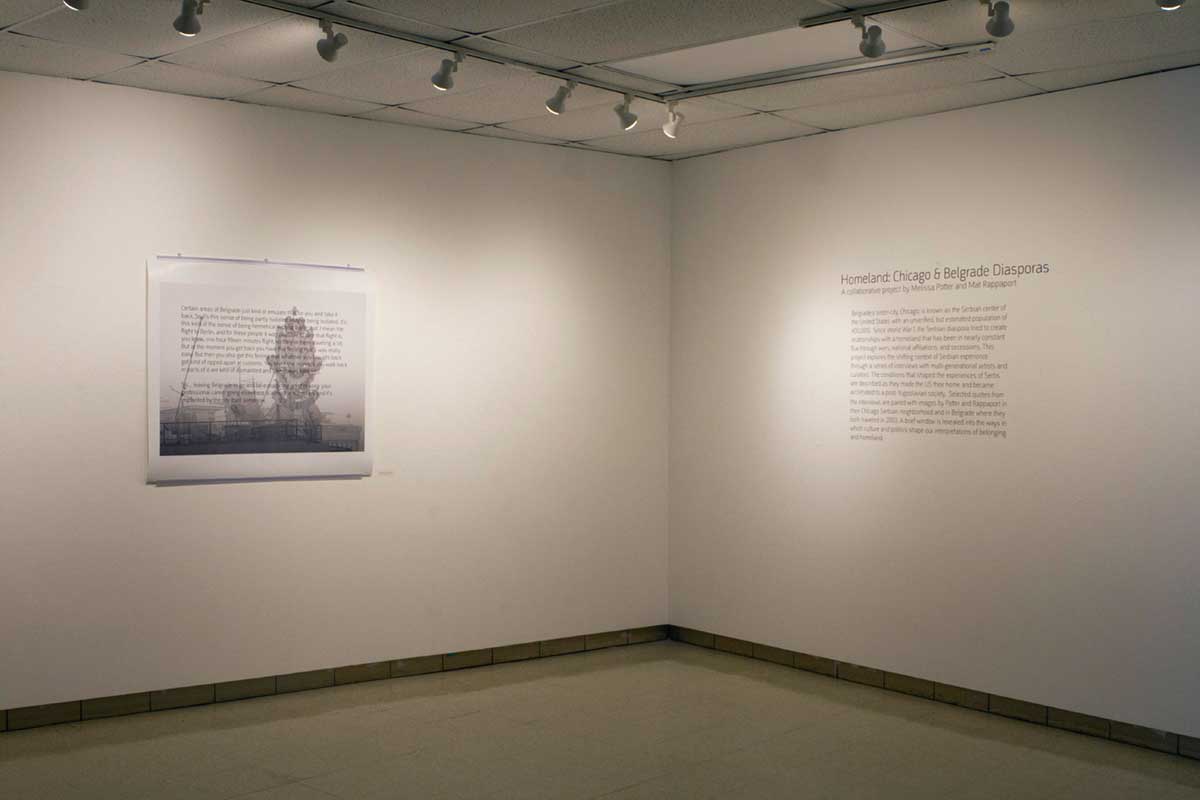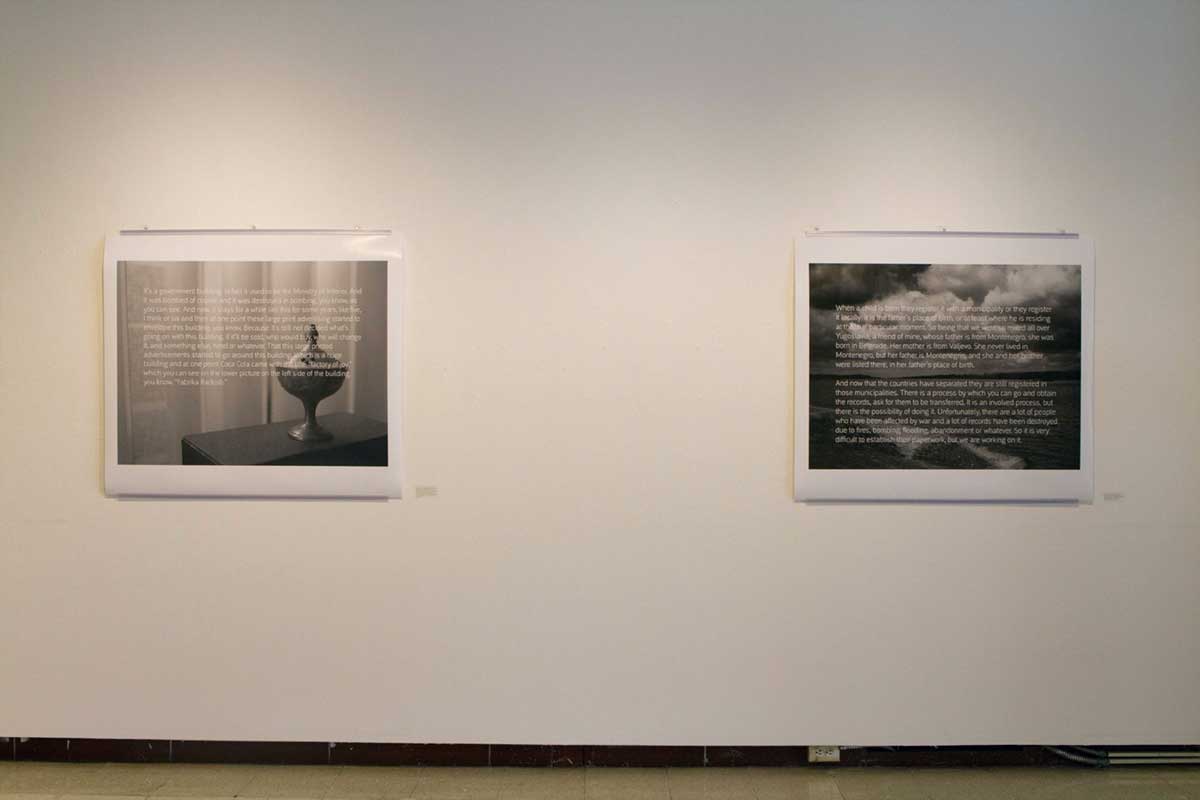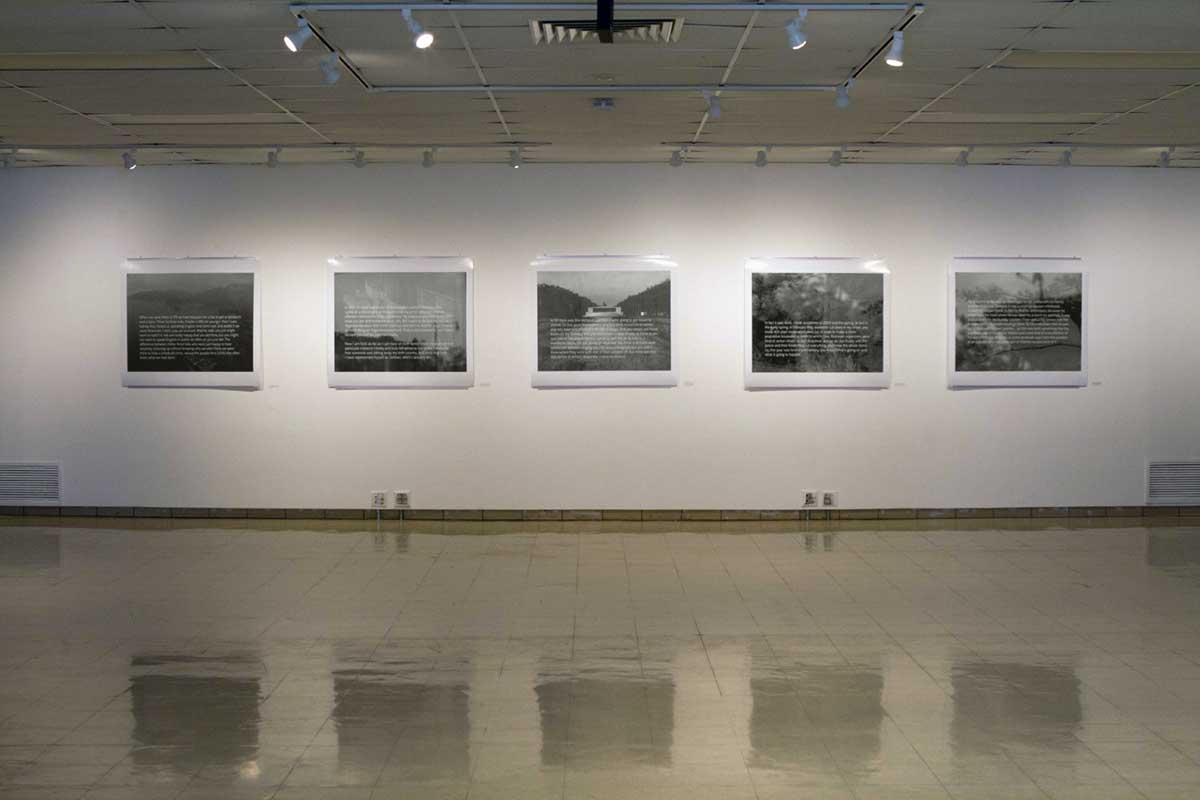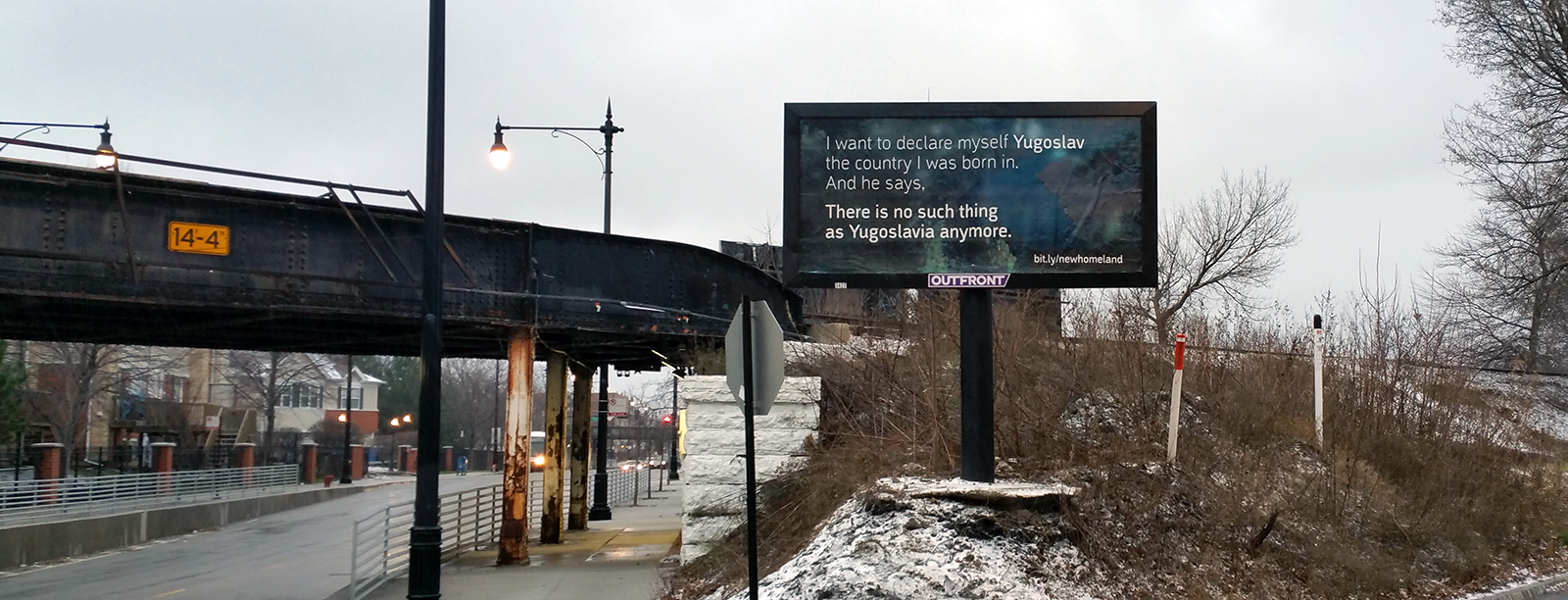
billboard installation. Irving Park, Chicago, IL
A Collaboration with Melissa Potter.
Statement
Belgrade’s sister-city, Chicago is known as the Serbian center of the United States with an unverified, but estimated population of 400,000. Since World War 1, the Serbian diaspora tried to create relationships to a homeland in nearly constant flux through wars, national affiliations, and secessions. This project explores the shifting context of Serbian experience through a series of interviews with multi-generational artists and curators who describe the conditions that shaped the experiences of Serbs as they made the US their home, and acclimated to a post-Yugoslavian society. Selected quotes from the interviews are paired with images by Potter and Rappaport in their Chicago Serbian neighborhood, and in Belgrade where they both traveled in 2003. They reveal individual experiences that offer a brief window into the ways in which culture and politics shape our interpretations of belonging and homeland.
Is there no such thing as Yugoslavia anymore?
Yugoslavia is many things to many people. For some it is a family tradition. For others it is an idea of a place they have never been.
Please consider contributing your story to this project.
Create your own user feedback survey
Homeland: Chicago & Belgrade Diasporas, St. Marys College 2014
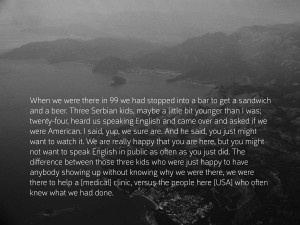
Matt Pavich, 2nd Generation Serbian-American, talks about being an American in Belgrade after the NATO bombing of the city. Photo Mat Rappaport
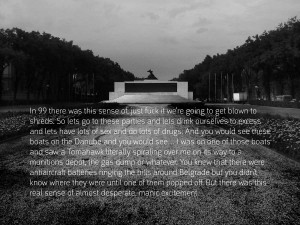
Matt Pavich, 2nd Generation Serbian-American, talks about the atmosphere in Belgrade during the NATO bombing of the city. Photo of a mural depicting the Montenegrian coast at the Serbian American Museum, Chicago by Mat Rappaport
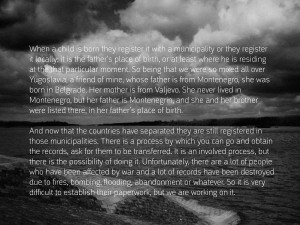
Vesna Zafirovski, 1st generation Serbian-American, talks about the changing territories of Former Yugoslavia, and the patriarchal traditions adding to the confusion. Photo of the banks of the Danube in Belgrade by Melissa Potter
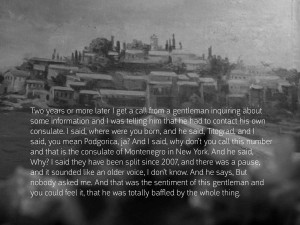
Vesna Zafirovski, 1st generation Serbian-American, talks about the changing territories of Former Yugoslavia and its impact on the older generation. Photo at the Serbian American Museum, Chicago by Mat Rappaport

Vesna Zafirovski, 1st generation Serbian-American, talks about U.S. government errors in identifying the country of Serbia. Photo Mat Rappaport
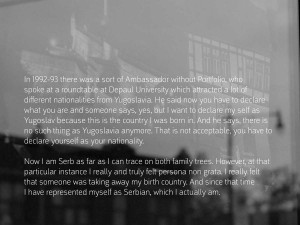
Vesna Zafirovski, 1st generation Serbian-American, talks about the sense of being without a country during tumultuous political change. Image from JAT headquarters in Irving Park, Chicago by Mat Rappaport
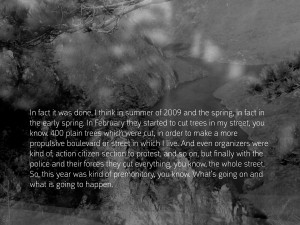
Čedomir Vasić, a Belgrade based artist, talks about the symbolism he saw in an boulevard being clear cut of trees. Image from JAT headquarters in Irving Park, Chicago by Mat Rappaport
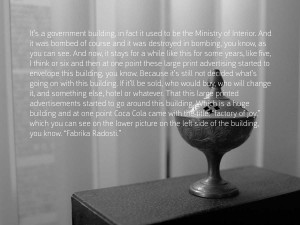
Čedomir Vasić, a Belgrade based artist talks about a Ministry building in downtown Belgrade that remains abandoned 14 years after the NATO strikes on the city, the façade is rented as billboard space. Image of religious artifact in the collection of Serbian American Museum St. Sava, Chicago by Mat Rappaport
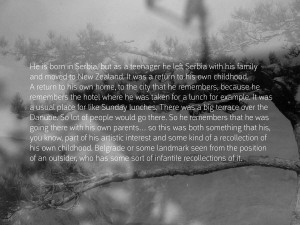
Branislav Dmitrijević, curator and critic, discusses work by Mladen Bizumić about a recently renovated Tito-era hotel in Belgrade. Image from JAT headquarters in Irving Park, Chicago by Mat Rappaport
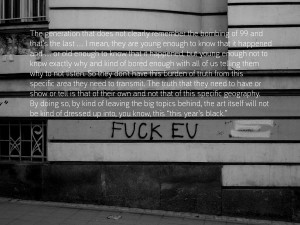
Dorijan Kolundzija, artist and curator discusses the Serbian Millennial response to a war culture they never experienced firsthand. Image of graffiti in Dorčol, Belgrade by Melissa Potter
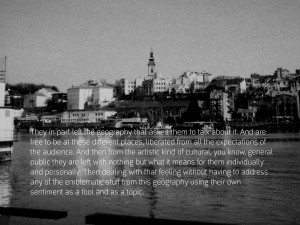
Dorijan Kolundzija, artist and curator, talks about the youth in Serbia and their disconnect from the Balkan wars of the 90s. Image of Sava River, Belgrade by Melissa Potter
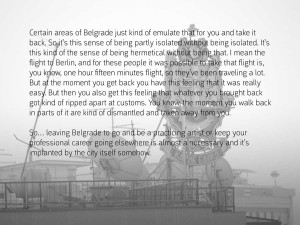
Dorijan Kolundzija, artist and curator, talks about the artistic necessity of leaving Serbia. Image of Belgrade by Melissa Potter
